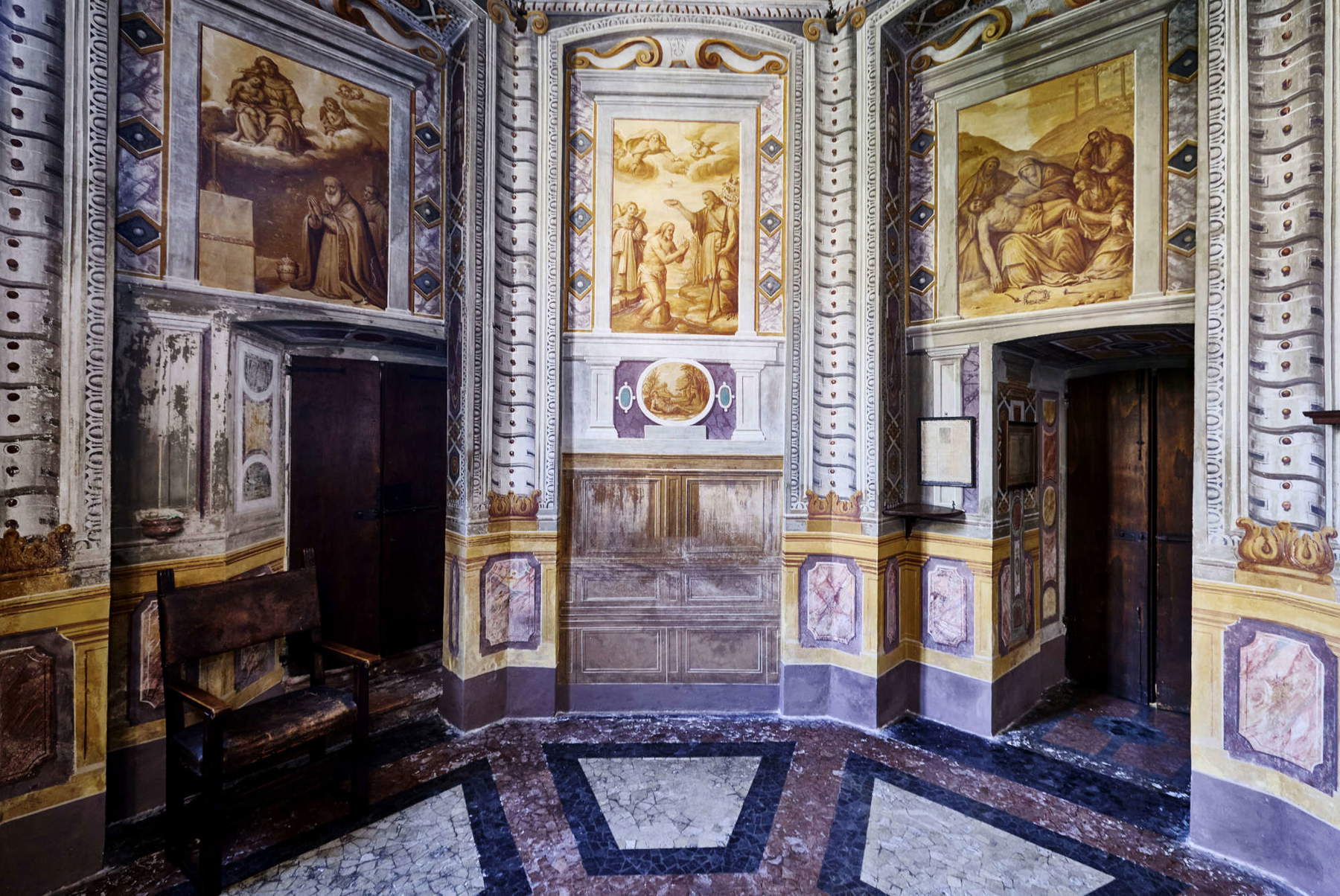Pavia, frescoes in the Sacristy of the Ghislieri College restored
A fragment of history and art is once again revealed in Pavia. On the occasion of the 457th anniversary of its founding, the Ghislieri College presents to the public the restoration of the frescoes decorating the 17th-century sacristy of its chapel. An event that celebrates the link between the city and one of its most prestigious cultural and academic symbols.
Founded on Nov. 27, 1567 by Pope Pius V, the institution has spanned the centuries as a hub of educational excellence, transforming into Italy’s first mixed university college in 1966 and continuing today as a secular institution under the High Patronage of the President of the Republic. Precisely to honor this long tradition, the College has chosen to return to students and citizens one of its hidden treasures: the great frescoes that embellish the sacristy, now recovered thanks to a major conservation operation.



The frescoes of the Ghislieri College
The frescoes are the work of an anonymous author, date from the early 17th century and were commissioned by Giorgio Pagliari, a former student and later Prefect of the College. Pagliari conceived them as a model of life for students, with the aim of forming a ruling class from the humbler classes and close to the original rigor of the Christian faith.
The sacristy, probably built within the first quarter of the 17th century, offers a cozy but charming environment, enriched by the dome decorated with geometric patterns and the mosaic marble floor. However, it is the wall paintings that catch the eye, with an iconographic cycle of strong spiritual and symbolic significance.
Among the most evocative representations is the so-called “mystical press,” a scene that symbolizes the Eucharistic sacrifice with an evocative visual metaphor. Jesus is depicted inside a vat, carrying the cross on his shoulders, representing the press of the winepress. Blood flows from his body and collects in a vessel, symbolically transforming into wine, a key element for man’s spiritual salvation. This image, deeply rooted in the popular devotion of the time, was conceived as a source of inspiration for the College’s young students, who were called to follow a path of spiritual and ethical elevation.



A restoration for the future
The restoration of the frescoes, conducted under the responsibility of Gianpaolo Angelini, a professor at the University of Pavia and a former student of the College, was made possible thanks to the support of the Association of Friends of Pavia Museums and Monuments, which financed a conservative intervention aimed at halting the deterioration caused by humidity and mold. The work involved the wainscoting in particular, but it represents only the first step in a larger project: the complete restoration of the adjacent Chapel, whose 17th-century frescoes were covered by plaster in the early decades of the 20th century.
“The recent conservation work carried out on parts of the Sacristy’s wainscoting, necessary to stop the deterioration caused by humidity and mold, was made possible by the generous contribution of the Friends of the Museums Association,” says Angelini. “It is the first step in a broader restoration campaign that will also affect the Chapel with the aim of bringing to light the 17th-century frescoes that, in the first decades of the last century, were covered by a layer of plaster.”
The official presentation of the restoration will take place precisely on Nov. 27, the date of the College’s founding, during a public meeting entitled “Rediscovering the Chapel of the Ghislieri College,” scheduled for 5 p.m. It will be an opportunity to immerse oneself in the College’s past and reflect on the importance of preserving and enhancing a legacy that spans the centuries.
 |
| Pavia, frescoes in the Sacristy of the Ghislieri College restored |
Warning: the translation into English of the original Italian article was created using automatic tools. We undertake to review all articles, but we do not guarantee the total absence of inaccuracies in the translation due to the program. You can find the original by clicking on the ITA button. If you find any mistake,please contact us.





























